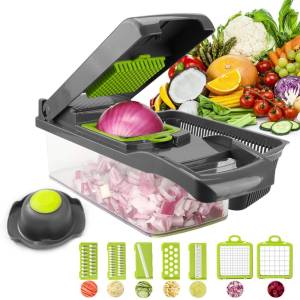The Chakchouka is a funny name to pronounce, but it is above all a delicious dish, still unknown to us. Chakchouka, Chechukchukka, Chuchukka, Chuchukka, Chakchouka, chakchouka, no matter how you write it, this dish is always as good to eat and beautiful to look at as cheerful to pronounce!
Many dispute the origin of Shakshuka, one of the reference dishes of North African gastronomy. Moroccans and Tunisians rival when it comes to attributing the paternity of a dish that, as its name suggests, is a ‘mixture’ of vegetables cooked and integrated over low heat. Apparently, this delicious dish that serves as the first of height or forceful dinner, has its birthplace north of the Strait of Gibraltar and that it is an evolution of the famous pisto manchego although with a touch of spices and spicy typical of the Maghreb gastronomy (thanks to that prodigious invention that is the Harissa). This theory of Spanish origin is based on the recurrent use of two ingredients: tomato and red pepper. Both came to Europe from America and from the Spanish gastronomy were spreading to the rest of the world. This dish is easy to make and only requires patience and good raw materials. La Harisa can be replaced by a teaspoon of coffee from that gastronomic jewel that is the paprika of the spicy paste.
Shakchuka: what is it?
The word of Berber origin means “mixture”. It is actually a dish simmered in a single pan, based on eggs and tomatoes, often accompanied by red peppers and onion, tasty and quick to prepare. Its little extra? You can vary infinitely by adding vegetables, minced meat, sausages, potatoes, herbs, yogurt, etc.
What is the origin of chakchouka?
With no less than 6 spelling variants – from chuchuka to choukchouka to chekchouka – chakchouka ultimately gives grammarians more trouble than blue cords. On the etymology side, there is no consensus either: if some attribute a Berber origin to it (where chakchouka means “mixture”), others see it as a direct remnant of the Punic shakshek (literally “mix”).
If linguistics is debated, the planisphere fortunately puts everyone in agreement: born in North Africa, the chakchouka then reached the lands of the Near East as a great traveler to find a place in middle eastern gastronomy.
Where does the Chakchouka come from?
Chakchouka is a Maghreb culinary specialty. Its name means “to mix”, and it has a lot of variants, such as Chekchukka, Chuchukka, or Chuchukka. However, the basis of the recipe remains the same.
While some say that Chukchuka comes to us from the Maghreb, others say that it comes from Turkey. Truth be told, it is impossible for us to know where exactly this dish comes from at the base. On the other hand, it is possible to see that it is found in many countries with variations of ingredients.
In short, Chechukka is a pan-fried roasted vegetable (mostly peppers and tomatoes). To which eggs are often added at the end of cooking. This can be served as a starter, but also as a side dish or as a complete dish.
What does chakchouka contain?
If its initial recipe is based on a tomato and onion stew topped with eggs cooked on the surface (or sometimes scrambled), the chakchouka has acclimatized to local preferences. Today there are a thousand and one variants just as greedy as each other, which can include zucchini, potatoes or black olives.
In Algerian (and even more Moroccan) chakchouka, red or green peppers are often present. In Tunisia, it is more willing to associate with merguez. On the Turkish side, on the other hand, it is the subject of a total revisit: the eggs disappear in favor of an entirely vegetable filling (eggplants, tomatoes, peppers, onions and garlic) that it is customary to cook in a mixture of salt, sugar, paprika and olive oil.
Enjoyed both hot and cold, it is all the rage at brunch time or during an express meal. Gourmets will condiment it with aromatic herbs (parsley, coriander …) or even crumbled feta for a boost of freshness. Also one of the flagship recipes of Ramadan, she soaks with delight a matlouh bread with semolina.
When do we eat it?
Whenever you want! At breakfast, lunch or dinner, the choice is yours! Chakchouka is delicious at any time, with bread and a green salad for example.
authentic Recipe of Chakchouka
The dish is most likely of Tunisian origin, but the recipe is quite common throughout the Middle East. The name of the dish, shakshuka, is of Berber origin and means “mixture, mixture”.
It can be used for lunch or, of course, brunch; in both cases, bring a very large loaf of good bread. It is a dish that must be eaten in the pan. If it is for several guests do not hesitate to multiply the doses and do everything in a large saucepan where everyone will draw with his piece of bread: this is the sublimation of the concept of “saucer”.
ingredients
- 300g of good quality crushed tomatoes
- 1 large onion
- 1 clove garlic
- 2 organic eggs from hens raised in free-range
- 2 tablespoons olive oil
- a stalk of fresh parsley
- salt and pepper
- chili and oregano according to taste
instructions
- Peel a clove of garlic, crush it garlic with the flat side of the knife and chop it coarsely. Coarsely cut a large onion and put everything to cook gently in a pan with a good spoon of olive oil.
- It is important to make all the cuts in a coarse and irregular way, which will produce different degrees of caramelization each time: said in other words, each bite will be an adventure.
- The North African version provides for peppers. For reasons I cannot understand, peppers found in France, except in high season, are particularly catastrophic and indigestible. So if you want my advice, no peppers.
- Once the caramelization begins, it is the time of spices: for my part, I just put a little pepper and oregano but do not hesitate to season the whole thing in a very liberal way: cumin, harissa, etc.
- When the onions are melting and colorful, add the tomato and simmer gently, stirring occasionally.
- Five minutes after adding the tomato, stop touching the pan and its contents: the sauce will be able to create light and very tempting principles of carbonization on the edges. After another five minutes swing the eggs, keep the fire to a minimum and wait.
- When the white is completely grasped (so white) and the yellow still trembling you are there. If the yolk seems too shaky for your tastes you can cover the pan with a lid for two minutes. A white patina will cover the yellows: it will be less pretty, but the yellow will still be creamy. Salt and pepper just before serving and sprinkle with parsley.
Shakshuka variants
Try one of these shakshuka recipes to get started.
Basic Shakshuka
This is a pretty classic version of the dish, streamlined and simple, with diced tomatoes, onion, bell pepper, garlic, cumin seeds, and paprika, plus eggs of course. You can leave the yolks as runny as you like, or cook until they’re set.
Shakshuka with Zhug
this slightly more involved take on shakshuka amps up the garlic, adds Anaheim chiles and feta cheese to the tomato sauce, and tops everything off with zhug, which is sort of like a spicy Yemeni pesto, made from cilantro, parsley, more garlic, and za’atar.
Eggplant, Chickpea, and Chard Shakshuka
This one from The Roasted Root demonstrates how easy (and delicious) it is to add extras to your shakshuka, like eggplants, leafy greens, and chickpeas. Check your fridge for any languishing produce that would be good to toss in; the dish will be happy to embrace it.
Spicy Chorizo Shakshuka
If you’re craving meat, you can add something as basic as ground beef to shakshuka, but spicy chorizo is especially good with the warming tomato sauce and gentle eggs. Try subbing in merguez sausage too if you can find it.
Green Tomatillo Shakshuka
There are many ways to make green shakshuka: nestle the eggs in a mess of collard greens and kale; blend peas and lots of bright green herbs for the sauce; even use shaved brussels sprouts, spinach, and zucchini. But this version from Love and Olive Oil is more like a Mexican interpretation, with a sprightly green tomatillo sauce. When they’re in season, you could try substituting green tomatoes for some or all of the tomatillos.
Fish Shakshuka
If you want to think of shakshuka as a method rather than a specific dish, you can get even more creative. Scour the web and you’ll find suggestions as novel as leftover chili baked shakshuka, but cooking fish in a more traditional rendition of the sauce (whether instead of or in addition to the eggs) makes for a great weeknight dinner





